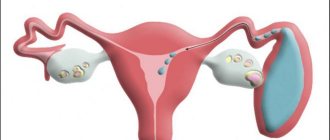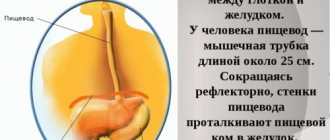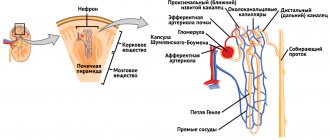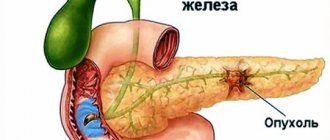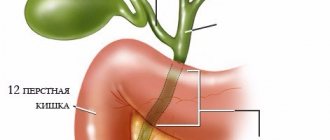Cause
Doctors name only provoking factors that can give impetus to the development of malignant degeneration of cells. These include the following phenomena:
- Hereditary predisposition.
- Damage to the mucous membrane of the esophagus.
- Organ burns.
- Smoking and alcohol abuse.
- Poor nutrition.
- Vitamin deficiency in the body.
- Excess body weight.
- The effect of harmful chemicals and toxic substances on the body.
In addition to external provoking factors, some diseases can trigger malignant degeneration. Cancer often occurs against the background of long-term inflammatory processes, Barrett's esophagus, or hernia.
Causes of cancer development
The causes of damage to the esophagus by cancer cells, as well as other organs, are not reliably known. An important factor predisposing to the development of cancer is an irritant to the mucous membrane. The development of the inflammatory process of the mucous membrane is influenced by thermal, chemical or mechanical effects. Further, inflammation leads to the so-called cell dysplasia, the process of transformation of healthy cells into pathological ones begins.
The process of transformation of healthy cells into pathological ones
If a patient has chronic esophagitis, there is a high risk of developing cancer. Experts define this condition as precancerous.
Attention! When diagnosed with Barrett's esophagus, a factor in the development of oncology is allowed.
Scientists associate cancer of the digestive system with the p53 gene (an increase in an abnormal protein that is unable to protect the body from destructive cancer cells occurs). It is possible that HPV can also predispose to cancer. The danger of this virus is that it cannot be completely cured. Only by strengthening the immune system is the virus suppressed, but remains in the body.
Human papillomavirus significantly increases the risk of developing internal organ cancer
Types of esophageal cancer
During the diagnostic process, it is important for the doctor to find out what type of esophageal cancer the patient is developing. The purpose of treating the pathology largely depends on this. There are several classifications in medicine. Depending on the form of growth, the following types of neoplasms are distinguished:
- Exophytic. It grows into the lumen of the organ and rises slightly above the surface of the mucous membrane.
- Endophytic. It develops in the thickness of tissues and extends beyond the organ.
- Mixed. Has a tendency to quickly destroy tumors and cause ulcers.
Depending on the morphological structure of the lesion, oncology is divided into:
- Squamous cell carcinoma of the esophagus, formed from squamous epithelial cells. It can develop on the surface or affect the deeper layers of the organ.
- Adenocarcinoma arising from glands that produce mucus. It is quite rare and has a more severe course, unlike the previous type of oncology.
Based on location, cancer of the upper, middle and lower parts of the esophagus is distinguished. Of these, the lower region of the organ is most often affected.
Causes
Location of the tumor in the esophagus
As mentioned above, the main cause of the disease is the abuse of alcohol, drugs and tobacco products. But these factors do not always become the main causes of the disease, because esophageal cancer is also provoked by:
- eating spicy and hot foods, resulting in a violation of the integrity of the esophageal cavity;
- with frequent consumption of meat and fish, which was prepared using the smoking method;
- when eating food that consists of small bones (fish). The bones cause irritation of the esophagus and create injuries on its walls. Any irritant that has a negative effect on the cavity of the esophageal walls is the main reason for the activation of the disease.
Also, the possibility of developing the disease “esophageal cancer” due to eating food that does not contain vitamins of groups A, B, C and E cannot be ruled out.
The causes of the formation of a tumor of the esophagus include the following diseases: chronic inflammation of the walls of the esophagus, erosion, ulcer. An ulcer occurs during a prolonged course of gastritis and is caused by the release of an irritating substance (stomach juice, bile) into the lumen of the esophagus, resulting in a long-term carcinogenic effect on the mucous membrane of the esophagus, which leads to the development of cancer.
Doctors do not rule out damage to the esophagus through thermal and chemical burns. These burns can occur through unintentional consumption of metal dust, asbestos and combustion products.
Heredity also plays a significant role in the progression of a tumor, since the genes of a person who has cancer are passed on to their offspring.
In rare cases, benign tumors can also cause esophageal cancer.
Clinical picture
In the early stages of the development of a malignant tumor, the patient does not feel any pronounced manifestations. As the pathological process progresses, the first symptoms of esophageal cancer begin.
One of them is difficulty swallowing food. It seems to a person that food does not pass into the stomach, but gets stuck in the esophagus. The patient tries to push food down with water. At first, this manifestation does not bother us much, so people do not attach much importance to it.
Another sign of esophageal cancer is chest pain. It occurs due to the fact that the tumor puts pressure on the nerve endings. Typically, such a sign indicates that the neoplasm has spread beyond the organ.
Over time, when the esophageal tumor becomes large and narrows the lumen of the esophagus, the person begins to eat less and less, eventually giving up food altogether. This occurs due to the inability of food to pass into the stomach. As a result of refusing to eat, the patient loses a lot of body weight and constantly feels hungry.
Also symptoms of esophageal cancer in women and men are general weakness of the body, frequent vomiting, regurgitation, and unpleasant odor from the mouth. When metastases spread to other internal organs, specific signs of esophageal cancer appear.
If the lesion affects the lungs, the patient suffers from shortness of breath, chest pain, and cough. When cancer cells penetrate the vocal cords, a change in voice is observed. In the final stages, a person is overcome by depression.
Esophageal cancer - early stage manifestations, treatment and prognosis
Elderly men are more likely to suffer from damage to the esophageal wall. Esophageal cancer, the first symptom of which may be difficulty swallowing solid foods caused by a narrowing of the esophagus, most often develops due to drinking and smoking.
What is esophageal cancer
A malignant neoplasm (blastoma) appears in the process of pathological degeneration of normal cells. The tumor forms on the wall of the esophagus from epithelial cells of the mucosa. Usually the lower and middle parts of the organ are affected.
Among malignant tumors, the most common tumor is a neoplasm of flat epithelial cells; the second most common is adenocarcinoma, which develops from glandular cells.
In 10% of cases, this type of oncology is accompanied by tumors in the oral cavity - cancer of the larynx, palate, tonsils, lips.
The risk group is people over 60 years of age; men are diagnosed with this disease 3 times more often than women. The disease is more common in Asian countries, also in some areas of Siberia.
This is due to the fact that in these areas they eat a lot of pickled foods, which negatively affects all organs of the digestive system and is a provoking factor for the occurrence of this type of cancer.
Representatives of the Negroid race suffer from this disease 6 times less than Europeans.
This type of cancer accounts for about 5-7% of all cancers in the world.
Types of disease
The disease is classified into several types.
Based on growth characteristics, this disease is divided into the following types:
- exophytic, when the tumor spreads only into the lumen of the organ and rises above the mucous layer;
- endophytic. With such growth, the tumor develops in the submucosal layer or in the thickness of the tissues;
- mixed. With this type, the tumor penetrates all layers of the walls, is characterized by the appearance of ulcerations and rapid disintegration.
Subtypes of tumor growth such as ulcerative-infiltrative and infiltrative-stenotic forms have the most unfavorable prognosis.
Depending on the location of the tumor, it can be:
- cancer of the lower third of the organ – 55% of cases;
- cancer of the middle part - 35%;
- Cancer of the upper part occurs in 10% of cases.
By structure they are divided into:
- squamous cell carcinoma. In this type, atypical cells develop from squamous epithelial cells;
- adenocarcinoma. Quite a rare species, more difficult to tolerate than squamous cell. The neoplasm is formed from gland cells that produce mucus. This type of cancer (cardioesophageal) is most often diagnosed in the lower parts of the organ, which are adjacent to the stomach. When the cardia is involved in the tumor process, characteristic symptoms of reflux may appear. Adenocarcinoma is caused by a condition in which flat mucosal cells are replaced by cells that are similar to the cells lining the small intestine.
Other types of esophageal cancer are even less common: sarcoma, melanoma, lymphoma, chorionic carcinoma.
Squamous cell carcinoma
This type, in turn, can be divided into two subspecies:
- superficial cancer is a more favorable (benign) form for the prognosis of the disease. The tumor is expressed in the form of a plaque or erosion that grows on the wall of the organ; it does not reach large sizes;
- deeply invasive cancer . This type of squamous cell carcinoma invades tissue deep in the organ. The tumor looks like an ulcer or a mushroom. With this type of cancer, metastases quickly develop in the trachea, heart muscle, and bronchi.
Squamous cell carcinoma in men most often appears in the place where the esophagus passes into the stomach; in women, the onset of the tumor process occurs in the lower sections and then moves to the upper sections.
In addition, squamous cell carcinoma is divided into:
- highly differentiated, when cells are prone to keratinization. This is a mature form of cancer;
- moderately differentiated - transitional form, occurs most often;
- low-grade – immature non-keratinizing form of cancer.
Squamous cell carcinoma is also divided into keratinizing and non-keratinizing:
- the keratinizing type leads to transformation of the mucosal surface. The keratinized cells make the esophagus dry, which aggravates all manifestations of the disease. A consequence of the rapid growth of the tumor, but the lack of nutrition for it, is the appearance of areas of necrosis, which during endoscopy look like areas with ulcerative lesions;
- the non-keratinizing type disrupts the functioning of the organ by a pronounced narrowing of the lumen. The manifestation of this form of disorder is periodic regurgitation when swallowing food and saliva.
Stages of the disease
Esophageal cancer has 4 stages:
- 1 – when the neoplasm is located only in the mucosa and submucosa, there is no germination into the muscle layer, there are no metastases and the lumens are not narrowed;
- 2 - the tumor penetrates the muscle layer. The lumen begins to narrow and swell. The neoplasm is located within the organ; isolated foci of metastases may be observed in nearby lymph nodes;
- 3 - the tumor affects all layers of the organ walls. There is no penetration into neighboring organs, but there are metastases in regional lymph nodes;
- Stage 4 – the tumor grows not only into all layers of the esophagus, but also into neighboring organs. There are metastases in distant organs and lymph nodes.
Causes
Oncology can appear under the influence of various risk factors. Most often cancer occurs:
- those who have many years of smoking experience. This is due to the fact that tobacco has carcinogenic substances that are deposited on the walls of the organ and lead to pathological changes in epithelial cells. In people who smoke, esophageal cancer occurs 4 times more often;
- with alcohol abuse. The alcohol contained in alcoholic products burns the esophagus, which leads to an atypical spread of squamous epithelium. In alcoholics, the disease is diagnosed 12 times more often;
- with poor nutrition. Eating pickled, spicy, or too hot foods has an adverse effect on the esophagus and promotes the development of abnormal cells. This is also facilitated by the consumption of products containing moldy fungi;
- after chemical burns of the esophagus. The consequences of accidentally swallowing alkali can appear after a few years in the form of a cancerous tumor;
- in people with vitamin deficiencies. For normal functioning, the esophagus requires vitamins A and E, which help create a protective barrier for the organ. With prolonged vitamin deficiency, the organ cells cannot cope with their protective function and degenerate.
In addition to the above reasons, the following can be noted: hereditary predisposition (P53 gene mutation), the presence of human papillomavirus (HPV). The development of cancer can also be preceded by: esophagitis, precancerous conditions: Barrett's esophagus, achalasia, ectopia. The impetus for the development of the disease is an unfavorable environmental situation and the presence of obesity in the patient.
on this topic:
Symptoms of the disease
Early symptoms that indicate the presence of a cancerous tumor include:
- difficulty swallowing saliva and food (dysphagia);
- gradual weight loss, even before cachexia;
- increasing weakness.
At the beginning of the disease, swallowing disturbance occurs only when trying to swallow solid food (apple, bread crust); this can be stabilized by washing down food with water. Gradually, as the tumor grows, the lumen of the organ decreases, and difficulties arise with swallowing even soft food (for example, cereals).
For your information! Dysphagia is considered an almost constant sign of esophageal cancer; as the disease progresses, this symptom only becomes more pronounced.
Other signs are:
- belching, regurgitation of swallowed food, which is a consequence of partial closure of the lumen of the esophagus;
- bad breath. This symptom occurs due to the stagnation of food particles in the esophagus, and this symptom is most pronounced in the morning. In the last stages of tumor development, such a smell is caused by the disintegration of the tumor;
- nausea, tongue covered with a whitish coating;
- chest pain. This symptom is caused by the growth of a tumor that compresses the nerve endings. Sometimes sharp pain occurs when swallowing food;
- hoarseness of voice. The symptom occurs when the tumor grows into the recurrent nerve and fissure;
- hunger. Due to the narrowed lumen, the patient cannot eat fully, and a lack of vitamins and microelements is created in the body;
- increased salivation (hypersalivation). The body tries to adapt to the new conditions that have arisen - with the help of an increased amount of saliva, it tries to facilitate the passage of food through the esophagus;
- in the presence of metastases, the following appear: shortness of breath, cough, severe pain in the chest area, bulging of the supraclavicular fossa;
- signs of intoxication - sleep disturbance, constantly feeling unwell, lethargy, periodic fever.
*Only upon receipt of information about the patient’s disease, a representative of the clinic will be able to calculate the exact price for treatment.
Complications of the disease
If the disease is not treated, it can lead to serious complications, which may include:
- obstruction of the esophagus (complete blockage). Occurs at the last stage, the patient then cannot even swallow liquid food;
- hemorrhage. When the tumor disintegrates, bleeding is possible; more often it increases slowly, but sometimes it is detected by the sudden onset of bleeding and the simultaneous flow of a large volume of blood, which can threaten the patient’s life;
- severe weight loss. Due to the inability to eat properly, cachexia may develop;
- paroxysmal cough. When the tumor disintegrates, a perforation of the trachea may occur, resulting in the formation of a tracheoesophageal fistula, which is the cause of paroxysmal coughing when swallowing food and liquids;
- metastases that spread through the blood vessels through the lymphogenous route. Tumor cells more often enter the lymph nodes of the left supraclavicular region and mediastinum with lymph flow. Through the blood, cancer spreads to the liver, brain, skeletal system, and lungs.
Treatment of the disease
The treatment method is prescribed by the doctor based on the stage of the disease, the size of the tumor, the age of the patient and the general health of the patient. Applicable:
- surgical method;
- chemotherapy;
- radiation therapy.
They are used both individually and in combination.
Surgery refers to the removal of the entire organ or part of it. Sometimes part of the stomach is also removed and a gastrostomy tube can be formed. There are several types of operations performed for this type of cancer:
- Osawa-Garlock operation . During this operation, an incision is made in the abdominal cavity. The tissues are dissected, the esophagus is isolated, dissecting the pleura. The stomach is removed into the pleural cavity. They retreat 8 cm from the tumor and excise it along with the esophagus, using a Fedorov clamp. The stomach is fixed in the diaphragm;
- Torek's operation . An incision is made on the right, the organ is isolated, then, by widening the hole, the cardia. A suture is placed at the end of the esophagus using catgut and silk threads. The tumor is cut off along with part of the esophagus;
- Lewis operation . Removal is carried out in two stages. First, an abdominal approach is made through the midline of the abdomen, then a revision is performed. A right thoracotomy is then performed. The tumor is excised along with the esophagus. This type of operation is performed more often than others. This type of surgery is prescribed when there are no metastases.
Sometimes endoscopic operations are used, they are not so traumatic. They are used in the early stages of the disease. To increase the lumen of the esophagus, bougienage is performed using special flexible cylindrical tubes.
Using a combination of radiation and chemotherapy has good results. For esophageal cancer, the following drugs are used:
- "Mitomycin";
- "Bleomycin";
- "Farmorubicin";
- "Vindesine."
When using only chemotherapy, the life expectancy of patients increases by 15-20%; with a combination of chemotherapy and radiation therapy, life expectancy can increase up to 45%.
Some patients achieve good results when using remote gamma therapy. It can be used independently or as an auxiliary therapy before and after surgery. Irradiation of a tumor stops the growth of cancer cells.
on this topic:
Diet for cancer
Proper nutrition is of great importance during the recovery period. It is necessary to include in the diet such dishes that supply the body with all the necessary components for normal functioning. Rough food should be avoided.
The main nutritional recommendations are:
- food should be pureed, this will facilitate its passage through the esophagus;
- the weight of food eaten per day cannot be more than 3 kg;
- volume of liquid – no more than 6 glasses (including soups);
- meals - at least 6. Portions - small;
- food temperature is average.
Source: https://pro-rak.com/opuholi-pishhevaritelnoj-sistemy/rak-pischevoda-pervye-simptomy/
Diagnostics
If you suspect the development of a malignant tumor, you should immediately visit a doctor. The doctor will listen to complaints, study medical history and prescribe an examination. Diagnosis of esophageal cancer consists of several methods:
- X-ray. The study is carried out using a contrast agent, which is given to the patient to drink. It envelops the surface of the esophagus and helps to visualize it well on an x-ray. X-rays help detect narrowing of the organ, damage to its walls, and the presence of ulcers.
- Esophagoscopy. The procedure is carried out using a special tube equipped with a small camera, thanks to which it is possible to view the esophagus from the inside on a monitor screen. The method helps to identify damage to the mucosa, the size of the tumor, and its location.
- Bronchoscopy. Used to detect metastases in the respiratory organs. It is also carried out using an endoscope.
- CT scan. During the procedure, images of the internal organs are taken, which allows you to assess their condition, detect tumors and metastases in the lymph nodes and organs.
- Ultrasonography. It is carried out using a special sensor that emits ultrasound. The technique helps to identify a tumor, determine its size, location, and the presence of metastases.
Diagnosis of esophageal cancer ends with a biopsy. During the process, a small piece of the affected tissue is removed. Then the resulting material is sent for histological examination, where the cells are examined under a microscope. Based on this examination, a final diagnosis is made and treatment is prescribed.
Therapy methods
Treatment for esophageal cancer is carried out in different ways. For each patient, therapy is prescribed individually, depending on the stage of cancer development, tumor size, and the presence of metastases.
Surgery
The extent of the operation depends on the extent of the lesion. If the lesion does not exceed 3 cm, then only the tumor and some healthy tissue adjacent to it are removed. If the tumor is larger, then one of the following types of surgical intervention is performed:
- Esophagectomy, which involves removing the tumor along with part of the esophagus. In its place, intestinal or stomach tissue then appears.
- Esophagogastrectomy, during which not only part of the esophagus is removed, but also the upper zone of the stomach and lymph nodes. The removed areas are restored with tissues of the large intestine.
In medicine, there is a modern method for removing a malignant tumor - radiosurgery using a CyberKnife. This treatment is the safest and most effective, but not every hospital has the equipment to carry it out.
Treatment
The choice of treatment for esophageal cancer is completely determined by the stage of the tumor process and the type of tumor. As a rule, a comprehensive plan for getting rid of the tumor is drawn up, which may include:
- surgery;
- radiotherapy;
- chemotherapy;
- targeted therapy.
Surgery
To remove the tumor, endoscopic techniques or direct surgery are used.
The scope of surgery for esophageal cancer is determined by the stage of the tumor process.
In the early stages, endoscopic techniques can be used to remove the tumor:
- endoscopic mucosal resection;
- radiofrequency ablation;
- photodynamic non-thermal destruction.
Surgical interventions to remove the tumor and a small area of adjacent tissue are carried out when the tumor is small (up to 3 cm), the cells of which have not spread to the underlying tissue. In other cases:
- esophagectomy - the part of the esophagus affected by the tumor process is removed, and a section of the large intestine or stomach tissue is replaced in its place;
- esophagogastrectomy – part of the esophagus, the upper part of the stomach and regional lymph nodes are removed, and the removed areas, if necessary, are restored with colon tissue.
In some clinics, stereotactic radiosurgery using the CyberKnife device, which is combined with radiation treatment with an Elekta Synergy linear accelerator, is used to remove esophageal tumors.
In some cases, palliative surgery has to be performed for esophageal cancer. If a large tumor is detected in the final stages, endoscopic interventions can be performed to restore the lumen of the esophagus. To do this, a stent is implanted into it, supporting the walls of the esophagus and expanding its lumen. Similar interventions can be performed using traditional methods.
If it is necessary to remove the entire esophagus to allow food intake, gastrostomy surgery may be performed. Usually it is installed temporarily: until postoperative wounds heal, during chemotherapy or radiation. During this operation, a tube is inserted into the stomach to introduce food. After this, reconstructive surgical interventions are performed.
Chemotherapy
The prescription of cytostatics, drugs for the destruction of cancer cells, can be carried out before and/or after surgery or if it is impossible to remove a tumor in advanced stages. For the treatment of esophageal cancer, a combination of the following cytostatics is prescribed:
- Cisplatin;
- 5-fluorouracil;
- Mitomycin;
- Vindesine;
- Bleomycin;
- Farmorubicin, etc.
The combination of chemotherapy with radiation increases the effectiveness of treatment to 45% for advanced tumor processes and up to 70% for locally advanced tumors.
Radiotherapy
In operable cases of esophageal cancer, courses of radiation are prescribed before and after surgery. Before performing the intervention, radiotherapy is recommended for infiltrative or undifferentiated forms of the tumor and when the cancer process is localized in a place difficult to reach for surgery - in the middle third of the esophagus. After surgery, radiation is recommended to prevent relapses or in cases where radical tumor removal was impossible. In combination with chemotherapy, radiotherapy is prescribed in inoperable cases in advanced stages.
Radiation therapy for esophageal cancer can be:
- remote – the radiation source is located outside the patient’s body;
- contact (brachytherapy) – the radiation source is placed in the patient’s body in the area of the tumor.
Targeted therapy
Targeted therapy involves prescribing chemicals to the patient that can recognize and specifically kill cancer cells. With this innovative treatment, healthy tissues are not damaged, since the drugs act only selectively.
Chemical and radiation therapy
The most effective treatment for esophageal cancer is chemotherapy. To carry it out, aggressive chemicals are used to destroy malignant cells. The drugs are injected into the blood, sometimes taken orally.
With chemical therapy, the effect is not local, but on the entire body at once. Therefore, the patient experiences adverse reactions in the form of hair loss, weight loss, digestive disorders, nausea and other ailments.
Radiation therapy is considered the least aggressive. The tumor is exposed to radiation, which suppresses the division of malignant cells and reduces the size of the tumor. Treatment is carried out remotely or by contact. Irradiation also causes side effects, but they are less pronounced and quickly disappear after completion of the treatment course.
As a supplement, esophageal cancer is treated with folk remedies, a diet is prescribed, and vitamins are prescribed.
Forecast
The prognosis for esophageal cancer depends entirely on the stage of the pathology. The earlier treatment is started, the greater the chances of a favorable outcome. When doctors make a prognosis, they consider the five-year survival rate. Depending on the stage of cancer, the prognosis is as follows:
- First degree - over 90%.
- Second degree - 50%.
- Third degree – no more than 10%.
With the fourth stage of oncology, a person cannot live another 5 years. It is possible to extend the patient's life only by a year.
Classification by stages
The stage of malignant tumors of the esophagus is determined based on the generally accepted international TNM classification.
The letter T denotes the size and spread of the primary tumor:
- Tis is a “cancer in situ”, a neoplasm that is located in the uppermost layer of the mucous membrane.
- T1 is a tumor that grows deeper, but does not reach the muscle layer of the esophageal wall.
- T2 is a tumor that grows into the muscle layer.
- T3 – the tumor grows into the outer shell of the organ (adventitia).
- T4 is a tumor that grows into neighboring organs: the peritoneum, pleura, pericardium, diaphragm (T4a) or trachea, vertebrae, aorta (T4b).
The letter N denotes foci in regional lymph nodes: N0 - no foci in the lymph nodes, N1 - 1-2 lymph nodes are affected, N2 - 3-6 lymph nodes, N3 - 7 lymph nodes or more.
M – presence of distant metastases. M0 – no secondary foci. M1 – distant metastases detected.
Depending on the values of T, N and M, there are five stages of esophageal cancer, from 0 to IV (some of them are divided into substages). In a simplified form, the classification looks like this:
- Stage 0: “cancer in situ” (Tis).
- Stage I: a tumor that does not grow beyond the esophagus, there are no foci in regional lymph nodes and distant metastases.
- Stage II: a tumor that does not grow beyond the esophagus; 1-2 regional lymph nodes may be affected.
- Stage III: The tumor has invaded adjacent organs and/or spread to more lymph nodes.
- Stage IV: There are distant metastases, regardless of T and N values.
In practice, it is first of all important for a doctor to understand whether a malignant tumor can be removed surgically. Depending on this, esophageal cancer is divided into resectable and inoperable. Stage 0, I and II cancers are usually resectable. Stage III tumors are resectable if they do not invade the trachea, spine, aorta or other important organs. Stage IV cancer is inoperable.
Prevention
The exact causes of the development of a malignant tumor have not yet been identified. Therefore, cancer prevention measures include eliminating from life all factors that can provoke this disease.
To prevent cancer you need:
- Adhere to healthy eating rules.
- Lead a healthy lifestyle.
- Stop smoking and drinking alcohol.
- Avoid contact with harmful substances.
- Treat any pathology of the esophagus in a timely manner.
Oncology immediate treatment. Therefore, at the first signs of esophageal cancer, you should immediately visit a doctor and undergo an examination.
First signs
The first signs of esophageal cancer are the feeling of a foreign body in it and slight pain when swallowing.
At the earliest stages of cancer development, the patient does not feel any signs of the disease. Typically, the first sign of esophageal cancer is dysphagia. The following unpleasant sensations may precede its appearance:
- scratching in the chest area;
- sensation of a foreign body in the esophagus;
- slight pain when swallowing.
Somewhat later, the patient has difficulty swallowing poorly chewed food. They are expressed in the sensation of a bolus of food being retained in some part of the esophagus or food sticking to its walls. The resulting discomfort is easily eliminated by drinking water.
After some time, the same sensations arise when swallowing well-chewed food, and the patient develops the habit of eating only liquid or semi-liquid foods. In some cases, dysphagia disappears for a while. This sign may indicate the beginning of the disintegration of the neoplasm.

